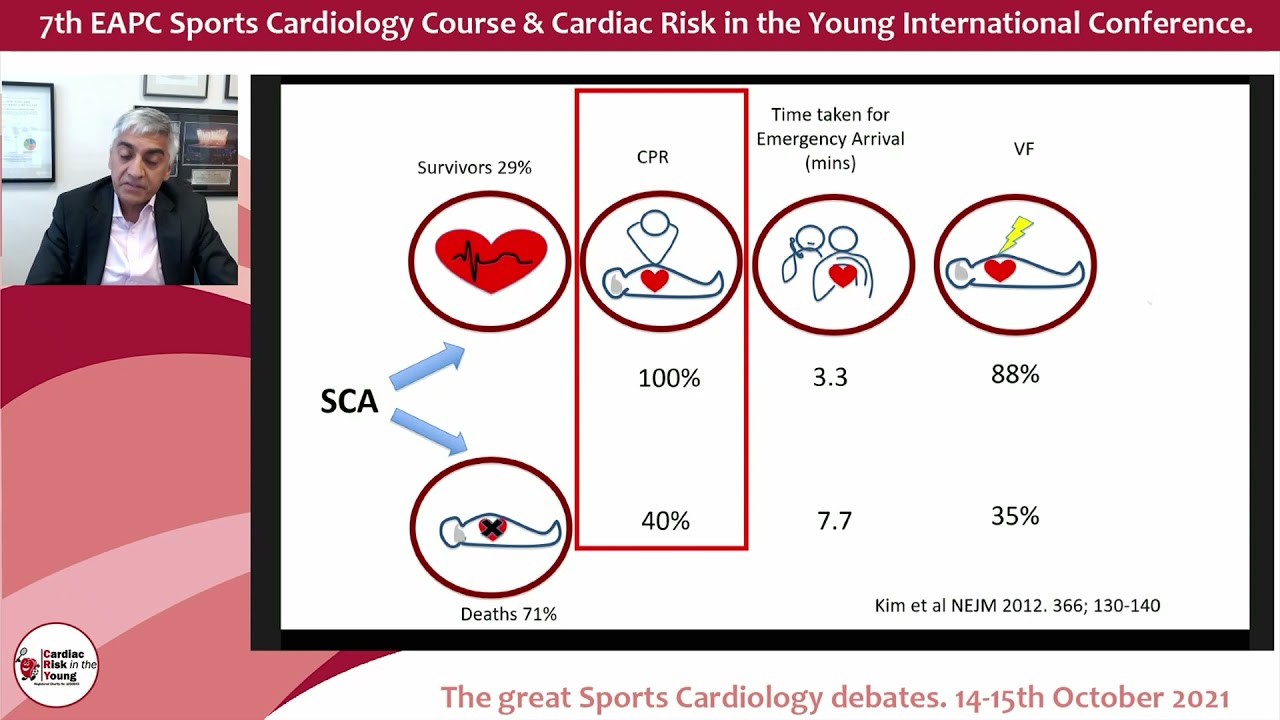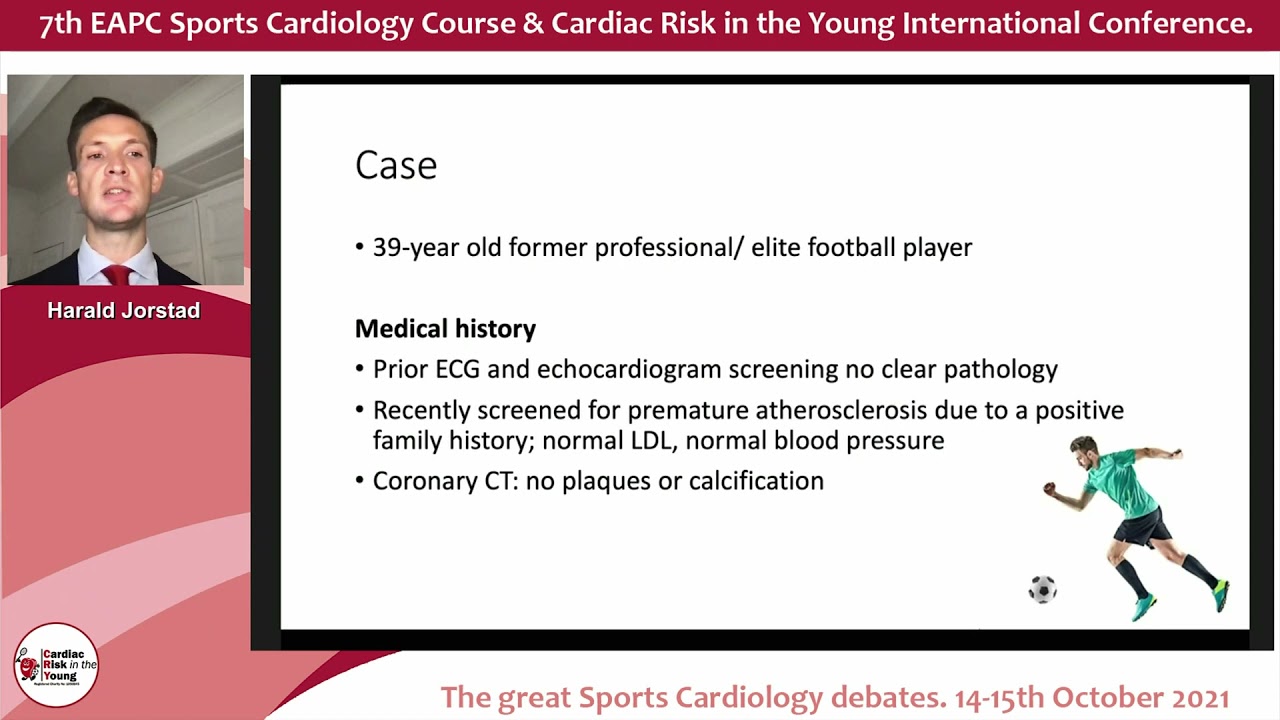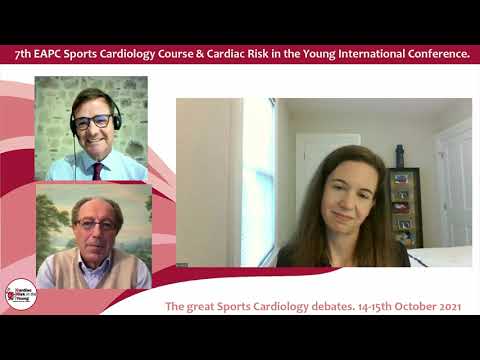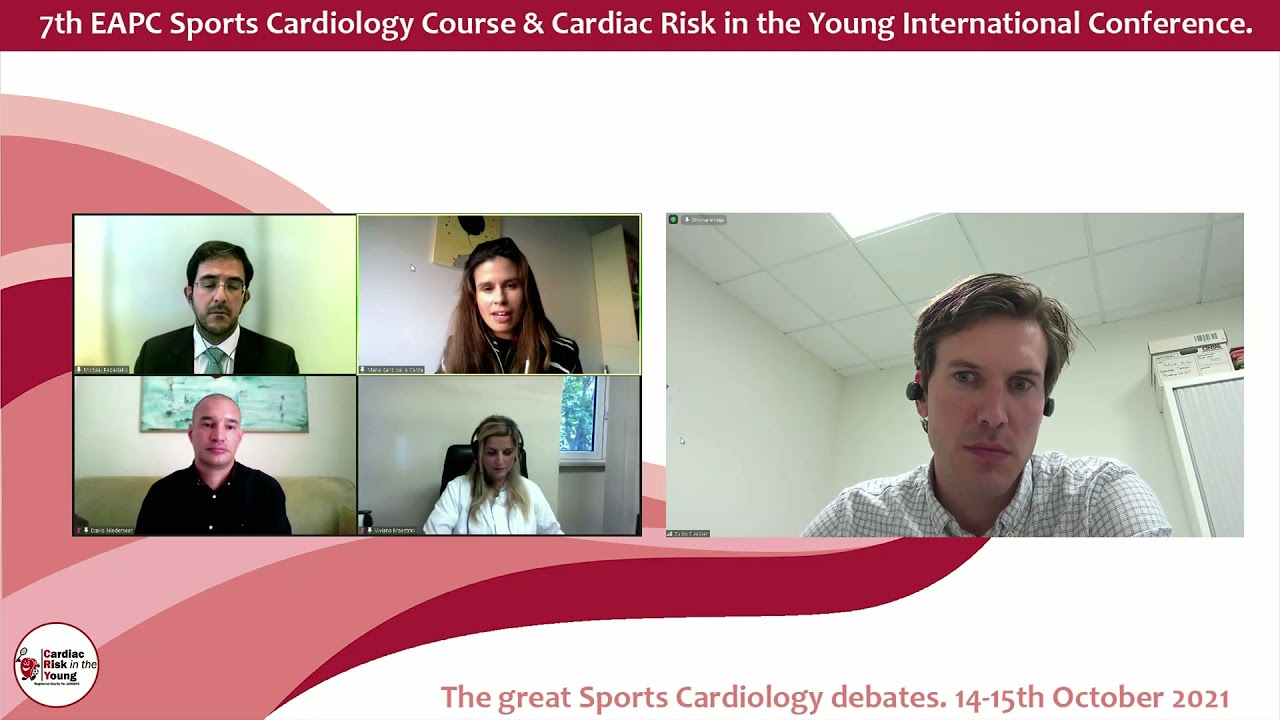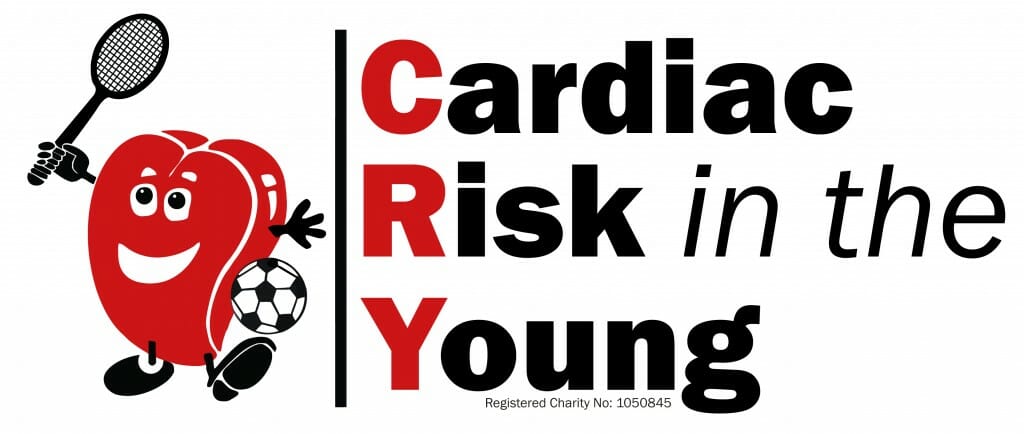Due to the ongoing COVID-19 pandemic, the CRY Conference was moved online again for 2021. On October 14 and 15, the conference was hosted in partnership by CRY and the European Association of Preventive Cardiology (EAPC). We were thrilled to welcome leading experts in cardiology from around the globe for presentations, discussion of case-based scenarios, and interactive debates for the audience to follow and engage with online.
The first debate of Day 1 was “Athlete with an ICD; No way back to competition?” This was led by Andre La Gerche, a cardiologist and researcher at the Baker Heart and Diabetes Institute in Melbourne, Australia, who presented a case of whether an athlete should be allowed to return to competition. The athlete in this case was an elite 26-year old Australian Rules Footballer, who had previously been well with no family history of any medical problems. He collapsed during a match and after getting up was immediately taken to hospital. In the presentation, Professor La Gerche went on to show some of the tests the athlete went through. It was established that the athlete had no other symptoms before or after the incident, and he went on to have a subcutaneous implantable cardiac defibrillator.
Professor Rachel Lampert from Yale Medical Center joined to argue the case against the athlete returning to sport, while CRY Consultant Cardiologist Professor Sharma presented the case that the athlete could resume competing.
The second debate of the day was entitled “Athlete with LQTS and prolonged QT interval; Treat and release.” This case looked at an 18-year-old competitive swimmer with long QT, who had a syncope spell two years ago and whose mother had a syncope spell while skiing, meaning there was family history to consider. The swimmer underwent a variety of tests. After 83% of the audience voted to say the athlete should not return to competitive sport, the debate began.
Professor Elijah Behr had the task of convincing the audience otherwise, making the case that the athlete could be treated and return to sport. After discussing various data, Professor Behr concluded with a few key points, including that athletes have longer QT intervals, many with QT prolongation do not have long QT syndrome, and there is no evidence of higher risk attributable to the additional QT prolongation of athletes. In fact, most patients are low risk, Professor Behr added. Dr Silvia Castelletti from the Cardiomyopathy Unit and Center for Cardiac Arrhythmias of Genetic Origin, Milan, Italy followed to present the case against the athlete returning to competitive sport. Dr Castelletti presented more data and outlined some of the arguments against, such as how participating in sport can lead to a further prolonged QT which can correlate with the increased risk of a cardiac event occurring.
After a Q&A session with questions from audience members, the second session of the day got underway. This session included three different cases. Firstly, Dr Harald T. Jørstad began with “Veteran athlete with atrial fibrillation; pit stop or steady on?” The case looked at a 39-year-old man who is a former professional football player with atrial fibrillation. The former footballer contacted a clinic one morning to say that he had atrial fibrillation the night before and took his medication (flecainide). Now that he was feeling fine, he asked if it would be safe for him to play in a football match later that day. Dr Jørstad went on to discuss atrial fibrillation in more detail and how this case could be dealt with.
Next, Dr Michael Papadakis from St George’s University, London, looked at a case of an athlete with pre-excitation. In this instance, a 16-year-old sportswoman who attended a CRY screening. Her exercise regimen involves 13 hours of training per week, including competing in swimming and netball at county level. She reported some shortness of breath from exertion which had been attributed to hay fever, and she had no family history of concern. Dr Papadakis then looked at the ECG of the athlete to ask the audience what it showed, and discussed what tests could be done next.
For the third and final case of Day One, Dr Alessandro Zorzi from the Department of Cardiac, Thoracic and Vascular Sciences and Public Health at the University of Padova, Italy joined to give a presentation, entitled “Athlete with ventricular ectopy: it is a family thing.” Dr Zorzi looked at four members of a family who were referred to his cardiac clinic for evaluation. He explained their various symptoms, looked at their ECG results, and discussed what further testing or treatment they may need.
The first session of Day Two got started with a talk from Professor Martin Halle, examining the case of a 52-year-old male who suffered a non-ST-elevation myocardial infarction. In the three months since, the man underwent cardiac rehabilitation with moderate intensity exercise three to four times per week and had no symptoms. Before his acute myocardial infarction, though, he was more active – he went jogging for 45-60 minutes five times a week and took part in several half marathons and marathons, and wanted to return to a similar level of physical activity. So, Professor Halle discussed some of the testing the patient had and posted the question whether participation in high-volume sports, such as a marathon, could be recommended.
Dr Meagan M. Wasfy from the Cardiovascular Performance Program at the Massachusetts General Hospital in Boston, USA argued the case for the runner to return to this kind of sport. Dr Wasfy did say that personally she would not recommend training for a marathon, but did look at why cases need to be individualised and consider the goals of the patient. To counter, Professor Mats Börjesson argued why the runner should not return to such significant levels of sport.
The next case, presented by Professor Antonio Pelliccia, looked at a 43-year-old male football player with no symptoms or family history. The only finding with the footballer was abnormalities on his ECG, including markedly increased voltages. After Professor Pelliccia explained the footballer’s test results and low risk score, former CRY Research Fellow Dr Sabiha Gati from the Royal Brompton Hospital argued the case for a return to sport. Dr Gati closed with a few key arguments, such as how moderate exercise reduces cardiac risk factors and improves fitness, and how a sedentary lifestyle can have detrimental effects on people including those with hypertrophic cardiomyopathy. To conclude, Dr Jonathan Drezner gave his presentation to make the argument against the footballer returning to play. Dr Drezner looked at a few key points, such as how exercise can be safer for older patients with HCM but not necessarily younger patients, and that restricting participation in sports can reduce the risk of SCD. The session finished with a Q&A and discussion amongst the panel of experts.
The second and final session of Day Two began with a case presented by Dr Guido Claessen, “Athlete with dilated LV and reduced/borderline LVEF.” The athlete in this case was a 23-year-old elite runner who had reported some atypical chest pain when in a resting state. His clinical examination was normal, he had no personal medical history and takes no medication. There was some family history, though, as his father was a runner who was diagnosed with dilated cardiomyopathy at 44 years old. Dr Claessen discussed the testing the runner underwent and the panel of experts weighed in on the findings.
The next case of the session was presented by Dr Elena Cavarretta from Sapienza University of Rome, Italy on “An athlete with mitral valve prolapse.” Dr Cavarretta looked at the case of a male 40-year-old competitive triathlete who was diagnosed with mitral valve prolapse in 2010, and discussed his condition and to what degree he should be able to participate in sports.
The final presentation of the conference was given by CRY Research Fellow Dr Raghav Bhatia. Dr Bhatia’s case looked at a 20-year-old semi-professional cricketer after being infected with COVID-19. The cricketer was typically fit and well but went to his local Accident and Emergency department after having a two-day history of chest pains and a few other symptoms. The athlete had received two doses of the Pfizer-BioNTech vaccine and had mild illness with COVID a week after his first dose. Dr Bhatia looked at how to diagnose the athlete and how long they may need to wait before returning to sport, along with discussion from the expert panel.
The 2021 CRY Conference featured so many brilliant presentations and we are grateful to all the experts who took part.
It is important that anyone with a cardiac condition speaks with their own cardiologist for individualised advice about an exercise plan.
